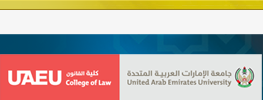Abstract
finance the projects of its clients, which results in long-term debts that the bank can only extract after long terms. These operations weaken the financing capacity of the bank.
To face this situation, banks need to transfer long-term debts to the benefit of a bank or other financial institution in exchange for an urgent payment of the value of these debts, so that the bank can recover its financial balance.
In response to the needs of bank debt trading, the Tunisian legislator has organized many legal processes that enable the bank in need of financing to transfer its debts to other financial institutions in a safe and fast manner.
Debt transfer operations and bank loans are divided first into operations subject to the exchange law, among which the traditional is derived from the process of discounting commercial papers. One of these operations is the second-class rediscounting process. And including what is new quoted from the French law, such as the bank’s referral of professional debts that it owes its clients. The first type of bank debt referral operations is considered safer, but slow and based on commercial paper trading and thus does not respond to the trend towards electronic transactions.
The second type is securitization, whereby debts are converted into securities. It is a fast and effective mechanism that responds to the trend towards electronic commerce and transactions, but it is affected by the risks of debts that have turned into securities, which leads to the expansion of the impact of these risks from the narrow field of debt to the wide field of the stock market, so the securitization mechanism is considered the main reason in the global financial crisis of 2007.
Recommended Citation
Hamrouni, Nizar Dr.
(2023)
"The Mobilization of Bank Debts under the Tunisian Law,"
UAEU Law Journal: Vol. 2023:
No.
94, Article 8.
Available at:
https://scholarworks.uaeu.ac.ae/sharia_and_law/vol2023/iss94/8

